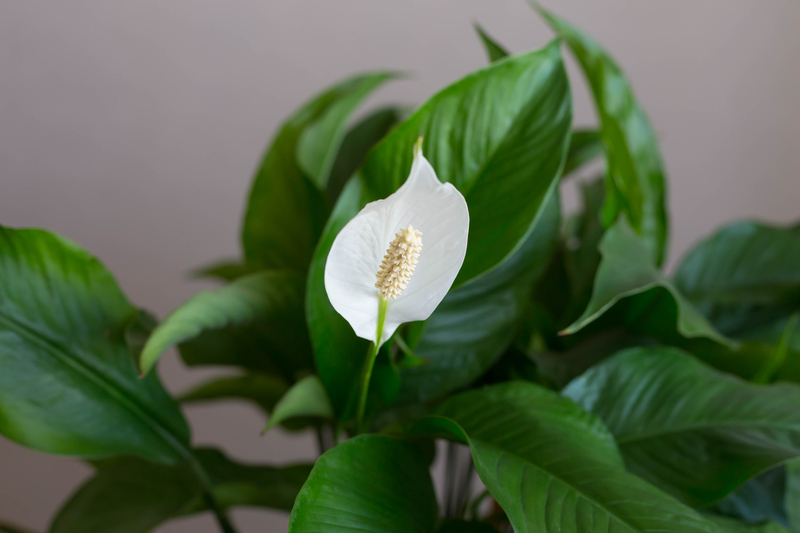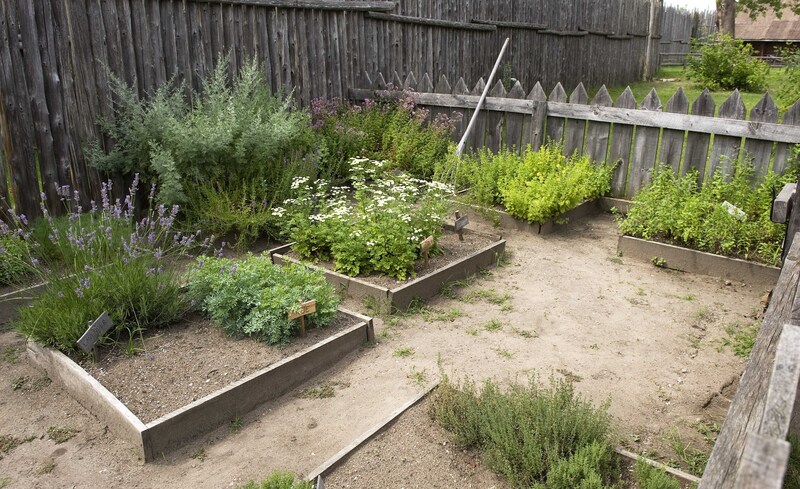Defensive Planting: Overcoming Wind in Your Outdoor Space
Posted on 22/09/2025
Defensive Planting: Overcoming Wind in Your Outdoor Space
Wind can be a severe adversary for gardeners, battering fragile plants, drying out soil, and diminishing the beauty and productivity of your outdoor space. Fortunately, defensive planting strategies can help you overcome wind's harsh effects. This comprehensive guide unpacks the best techniques, plant choices, and design ideas for overcoming wind in your garden, ensuring your outdoor area remains lush, protected, and visually appealing all year round.
Understanding Wind Challenges in Your Garden
Before you can effectively utilize defensive planting, it's important to understand how wind interacts with your outdoor space. Wind can:
- Break stems and branches: High-speed gusts can snap delicate plants and saplings.
- Dry out soil and foliage: Constant wind rapidly evaporates moisture, stressing your greenery.
- Lower temperatures: Wind chill can stunt the growth of even hardy species.
- Spread diseases: Airborne pathogens may be carried farther and faster by strong winds.
Recognizing these threats is the first step in creating a wind-resistant garden. By adopting defensive planting techniques, you provide a shield that protects your landscape, boosts biodiversity, and enhances microclimate conditions.

Key Principles of Defensive Planting
Defensive planting, at its core, involves using vegetation and landscape features to reduce wind speed, deflect gusts, and protect more vulnerable plants. Overcoming wind in your garden with this method revolves around several fundamental concepts:
- Creating layered barriers - Use combinations of hedges, shrubs, and trees to disrupt wind flow.
- Positioning is crucial - Place windbreaks on the windward side (where prevailing winds enter).
- Selecting resilient species - Choosing tough, flexible plants ensures longevity and less maintenance.
- Stacking heights - Mix tall trees with medium and low shrubs to block wind from the ground up.
- Allowing filtered airflow - Solid barriers can create turbulence; semi-permeable planting lets some wind pass for gentler breezes.
By integrating these principles, you can transform a windswept garden into a tranquil, productive, and healthy outdoor sanctuary.
Designing Effective Windbreaks
What Is a Windbreak?
Windbreaks are rows of shrubs, trees, or even hardscape features designed to slow and filter wind before it reaches more delicate parts of your garden. The most effective windbreaks are typically two to five times as tall as the plants or structures they protect.
Benefits of Windbreaks include:
- Reduced soil erosion and moisture loss
- Increased comfort for people and pets
- Improved pollinator activity due to calmer conditions
- Enhanced yields in vegetable gardens and fruit orchards
Best Plants for Windbreaks
When planting for wind defense, choose species known for durability, density, and flexibility. Here are some top choices:
- Coniferous Trees: Pines (Pinus spp.), Yews, and Spruces provide dense, evergreen cover year-round.
- Deciduous Trees: Hornbeam, Beech, and Sycamore are robust enough to handle blustery conditions.
- Dense Shrubs: Elaeagnus, Viburnum, and Hawthorn offer thick, bushy protection lower to the ground.
- Ornamental Grasses: Miscanthus, Pampas Grass, and Reed Grass sway with the wind and fill gaps between larger plantings.
Remember, a mix of species is often more effective - and more attractive - than a single line of one variety.
How to Position Windbreaks Most Effectively
- Place the windbreak perpendicular to prevailing winds for maximum effectiveness.
- Stagger plants in an offset double row, creating a dense, interlocking barrier.
- Allow wind to filter through (ideally 50%-70% permeability) to prevent damaging turbulence and downdrafts on the sheltered side.
- Extend windbreaks beyond garden boundaries by at least 10-20 feet to trap swirling gusts at the edges.
Factoring in your local wind patterns and landscape contours helps you fine-tune these placements for the best possible results.
Choosing the Right Plants for Wind-Prone Gardens
Success with defensive planting for wind starts with wise plant selection. Look for plants with:
- Flexible stems and branches - these can bend rather than break under stress.
- Small, tough leaves - reduced surface area limits evaporation and wind damage.
- Strong root systems - deep or spreading roots anchor plants against uprooting.
- Drought tolerance - since wind dries out the soil, choose plants adapted to moderate moisture.
Top Wind-Tolerant Plants
Here are some favorites suitable for exposure to wind:
- Tamarisk (Tamarix spp.) - Salt-tolerant and flexible, great for coastal or open sites.
- Rugosa Rose (Rosa rugosa) - Very hardy shrub with thick leaves and beautiful flowers.
- Sea Buckthorn (Hippophae rhamnoides) - Fantastically tough, edible berries, and effective wind resistance.
- Pyracantha (Firethorn) - Thorny, dense, and resilient, it offers barrier and wildlife value.
- Oak Trees (Quercus species) - Large oaks anchor and filter wind, making them perfect for long-term defense.
Consult a local nursery about native or regionally-adapted species for the best resilience and ecological benefit.
Structural Solutions and Garden Features for Wind Defense
Combining defensive planting with well-designed garden structures can maximize your protection. Here are a few ideas:
- Trellises and lattices: Plant climbers like ivy or wisteria on semi-permeable panels to add another layer of wind disruption.
- Solid fencing with gaps: A 50% open fence reduces wind speed without causing damaging eddies.
- Raised beds or berms: Elevate planting beds or mound earth to reduce wind directly at soil level.
- Garden walls: Use low stone or brick walls as a shield for prized plants, combining beauty with functionality.
- Water features: Pools, ponds, and fountains can add wind-buffering humidity to very dry spots.
Imagine your garden as a series of interconnected microclimates. By using both plants and structures, you create sheltered pockets where tender or decorative plants can thrive.
Planting Techniques for Wind Protection
Step-by-Step: Creating a Defensive Planting Scheme
- Assess Your Site: Identify prevailing wind directions and vulnerable spots in your outdoor space.
- Plan Layered Planting: Begin with a tall windbreak row, then stagger medium-sized shrubs ahead, with ground covers and tough perennials in front.
- Space Plants Correctly: Allow enough room for mature growth and airflow, preventing overcrowding and disease.
- Mix with Hardscaping: Blend plant and non-plant elements for protection at multiple heights.
- Mulch for Moisture: Wind dries soil quickly. Mulch deeply to retain water and protect roots.
- Water Smartly: Water early morning; irrigate at the base to reduce evaporation and wind drift.
Maintenance Matters
Defensive plantings need some care to remain effective:
- Prune for health and shape - Keep windbreaks dense at the base and thinned at the top to maintain optimum filtration.
- Watch for pest and disease - Wind can spread infestations, so monitor your plants regularly.
- Replace gaps quickly - Patch dead plants to prevent wind tunnels through your barrier.
- Feed and mulch annually - Maintain vigor and drought resistance.
Special Considerations for Different Landscapes
Coastal Gardens
These benefit from salt- and wind-tolerant species such as Tamarisk, Sea Buckthorn, and Escallonia. Combine defensive planting with sand dunes or boulders for stronger resistance.
Urban Rooftop Spaces
Use robust containers, wind-resistant grasses, bamboos, and trellised evergreens. Weigh down pots and use wind-permeable screens to buffer the most exposed spots.
Open Rural Gardens
Plant rows of fast-growing, hardy species, with staggered double lines and diverse layers. Incorporate living fences (hedges) for dual-purpose wind defense and wildlife value.

Benefits Beyond Wind: Ecosystem Gains from Defensive Planting
- Wildlife habitat: Mixed windbreaks provide shelter, food, and breeding spots for birds and beneficial insects.
- Enhanced privacy and security: Dense plantings also act as visual and physical barriers.
- Year-round interest: Evergreens offer winter color, and flower/berrying types add seasonal beauty.
- Soil health: Less erosion and more organic matter boost long-term soil fertility.
Defensive planting creates not just wind-resilient gardens but also greener, more sustainable landscapes for people and nature alike.
Summary: Transforming Your Windy Garden with Defensive Planting
Overcoming the wind in your outdoor space is both an art and a science. A combination of well-chosen plants, strategic layout, and practical garden structures can shield your garden from the wind's damage while enhancing its beauty and biodiversity.
Remember these key steps for successful wind defense:
- Assess your garden's exposure and problem zones.
- Plan and layer windbreak planting with a mix of tough, flexible species.
- Add structures like trellises and fences for multi-directional protection.
- Maintain your defensive plantings with regular care.
With a thoughtful, well-executed defensive planting strategy, you transform your exposed garden into a lush, sheltered oasis - where plants, people, and wildlife can all thrive, despite the wind.
Frequently Asked Questions
- How tall should a windbreak be to protect my garden?
Ideally, a windbreak should be at least as tall as the area or plants you wish to protect--taller windbreaks provide protection further downwind. - Can I use fences instead of plants for wind defense?
Fences with 50% open area can effectively slow wind, but plants also increase biodiversity and have longer-term ecological benefits. - What plants are best for windy balconies or patios?
Opt for tough, container-friendly species like lavender, rosemary, ornamental grasses, and compact bamboos. - How long does it take for defensive planting to become effective?
Quick-growing shrubs may provide shelter in 2-3 years, while larger trees take 5-10 years for full effectiveness. Short-term solutions like trellis screens can be used while plants establish.
Start your defensive planting journey today and turn your windswept outdoor space into a thriving, peaceful retreat!

